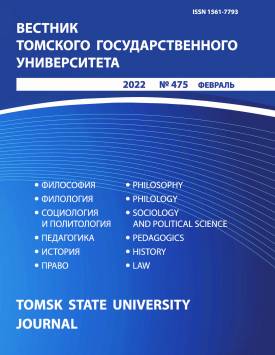Propaganda and “work on myth” in documentary series (using the example of the film A Brief Guide to How the World Works)
The article discusses the content of the documentary series A Brief Guide to How the World Works, based on the book West-Russia: The Millennium War by Guy Mettan. The definitions of the concepts “propaganda” and “myth” are given; the connection between them is shown: the basis of propaganda is “work on myth”. Myth is understood as an immanent phenomenon of social existence, which is present in it as a mythological reality in which the “mythical” live. It is impossible for us to understand a myth without taking into account the circumstance that we call the consideration of a social myth from the point of view of at least three subjects: people living the myth (“mythical”), creator of the myth (mythmaker), critic of the myth (mythologist). Documentary series are a clear way to demonstrate work on myth. The series provides examples of the consequences that “work on myth” about Russia and Russians lead to, both in everyday life and in the political sphere. At the center of “work on myth” in the series is the mythologem “Heartland inhabitants - the West”, which goes back to such a “global myth” as “Us and Them”, and such work itself permeates the main directions of the socio-philosophical understanding of the modern myth: ontological, gnoseological, axiological, praxiological, anthropological. The emphasis is on the fact that if Westerners have long had an entire industry (cinema, media) that produces and replicates an attractive image of the future of Western countries, this is not the case in Russia, and work is needed to create and broadcast a positive image of Russia. At the same time, working with the future, due to the inevitable presence of each state's own peculiar trail (background) or mythscape, seems no less difficult than working with the past. Nevertheless, in the series, the image of the future of Russia is presented as simplified, which corresponds to mythological representations with their simple picture of reality. Thus, many replicated images about Russia and Russians seem to be built on top of already existing myths and mythologems, which today constitutes the content of “work on myth”, vividly demonstrated by the creators of the documentary series. It is concluded that the purpose of the series was to tell the real, true story of relations between Russia and the West. But, in the end, the film itself was permeated with propaganda, cementing and strengthening the widespread ideas about Russians and Russia due to the constant reminder of them, even in the context of attempts to expose the relevant myths. After all, exposing a myth is one of the stages of “work on myth” in the film.
Keywords
myth, propaganda, “work on myth”, myths about Russia, image of future of RussiaAuthors
| Name | Organization | |
| Ivanov Andrey G. | Lipetsk State Technical University; Russian Presidential Academy of National Economy and Public Administration, Lipetsk Branch | agivanov2@yandex.ru |
References

Propaganda and “work on myth” in documentary series (using the example of the film A Brief Guide to How the World Works) | Vestnik Tomskogo gosudarstvennogo universiteta – Tomsk State University Journal. 2022. № 475. DOI: 10.17223/15617793/475/2
